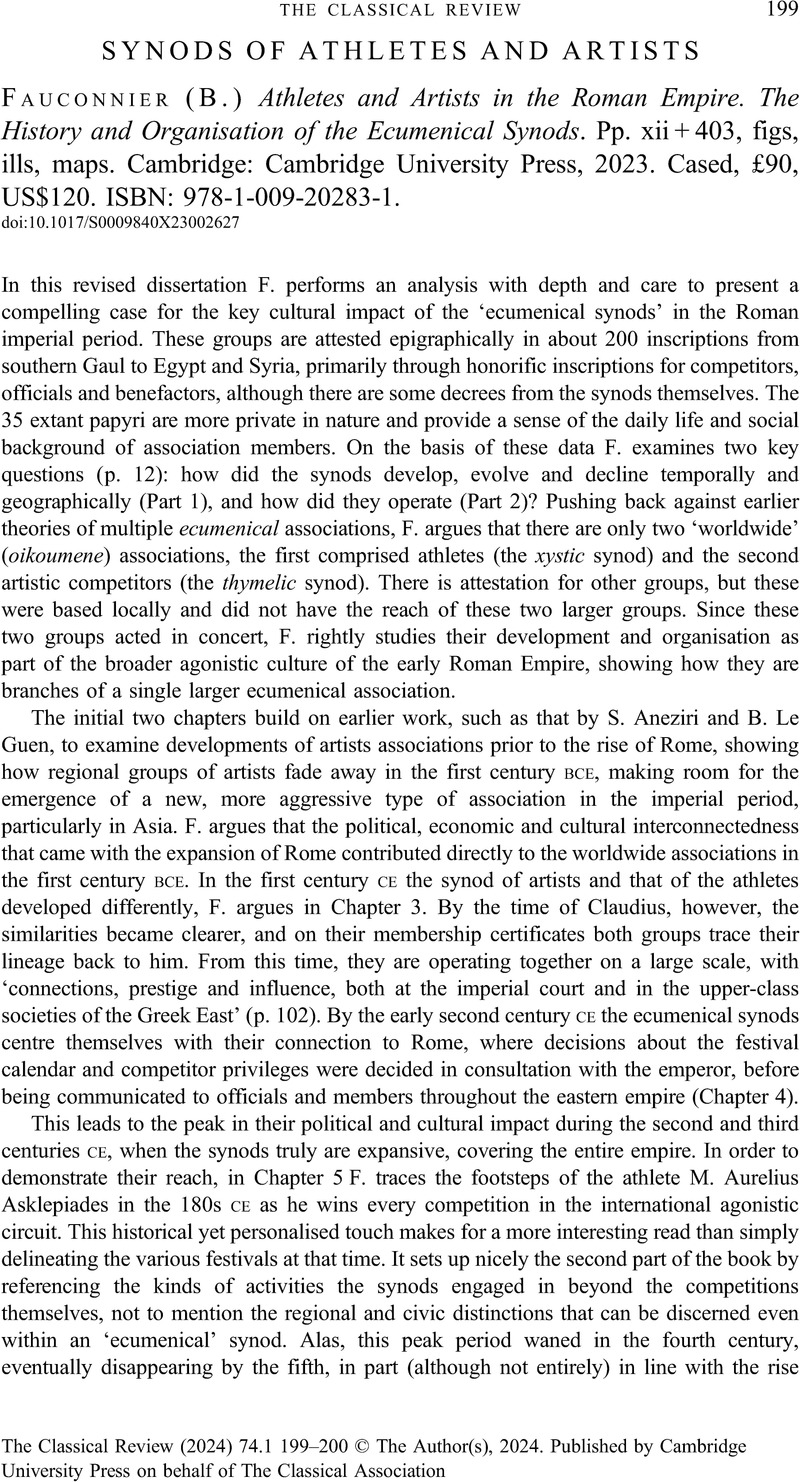No CrossRef data available.
Article contents
SYNODS OF ATHLETES AND ARTISTS - (B.) Fauconnier Athletes and Artists in the Roman Empire. The History and Organisation of the Ecumenical Synods. Pp. xii + 403, figs, ills, maps. Cambridge: Cambridge University Press, 2023. Cased, £90, US$120. ISBN: 978-1-009-20283-1.
Review products
(B.) Fauconnier Athletes and Artists in the Roman Empire. The History and Organisation of the Ecumenical Synods. Pp. xii + 403, figs, ills, maps. Cambridge: Cambridge University Press, 2023. Cased, £90, US$120. ISBN: 978-1-009-20283-1.
Published online by Cambridge University Press: 12 January 2024
Abstract
An abstract is not available for this content so a preview has been provided. Please use the Get access link above for information on how to access this content.

- Type
- Reviews
- Information
- Copyright
- Copyright © The Author(s), 2024. Published by Cambridge University Press on behalf of The Classical Association



